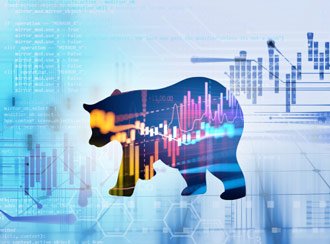We've seen it all before. A positive headline sends stocks rallying, only to see them tumble down to new lows.

It happened when the Fed's emergency rate cut dropped interest rates to near 0% on March 3. The Dow popped 5% higher over the next two days. Stocks slid another 30% since then.
It happened again after U.S. President Donald Trump declared a national emergency on March 13 and reassured Wall Street the federal government would put its weight behind an effort to stop the spread of the virus. The Dow surged 1,900, then its biggest point rally ever. The very next trading day, markets fell by 13%, their biggest one-day point loss ever.
Market Chaos Action Plan: Coronavirus panic has the market unhinged. Get three strategies for beating volatility, including the most powerful wealth-building tool for buying low. Click here now...
And it's going to happen this time too.
You see, this is all part of a pattern after a stock market crash. Short-lived rallies collapse into lower lows.
Take a look for yourself and find out what's coming next...
The Biggest Rallies Happen During Bear Markets
The biggest up days in stocks have happened during the worst market crash periods in history.
These are the top 10 largest daily percent gains in the Dow. As you can tell, they've all come in the bear markets that followed a major stock market crash. That includes Monday's furious rally.
| Date | Close | Point Gain | % Gain |
| March 15, 1933 | 62.1 | 8.26 | 15.34% |
| Oct. 6, 1931 | 99.34 | 12.86 | 14.87% |
| Oct. 10, 1929 | 258.47 | 28.4 | 12.34% |
| March 24, 2020 | 20,704.91 | 2,112.98 | 11.37% |
| Sept. 9, 1932 | 75.16 | 7.67 | 11.36% |
| Oct. 13, 2008 | 9,387.61 | 936.42 | 11.08% |
| Oct. 28, 2008 | 9,065.12 | 889.35 | 10.88% |
| Oct. 21, 1987 | 2,027.85 | 186.84 | 10.15% |
| August 8, 1932 | 58.22 | 5.06 | 9.52% |
| Feb. 2, 1932 | 78.6 | 6.8 | 9.47% |
A major rally like we've just witnessed isn't the end of stock market crash; it's actually a sign that we're smack in the middle of a bear market.
Reuters reports the S&P 500 has more 8% rallies during bear markets than during bull markets.
It's simply the reality of a dramatic drop in stock prices after a market crash that big rallies are easier to come by. And they disappear just as quickly. After the two double-digit jumps in 2008 in the table above, stocks fell for five more months afterwards.
Bear markets last about 14 months on average too. The recovery from a market crash could take years.
Now isn't the time to get complacent just because stocks have strung together a few positive days. Wall Street liked the stimulus package, but big rallies lead to bigger losses during bear markets.
And the worst is yet to come.
Here's what to look for before the next bull market can start...[mmpazkzone name="in-story" network="9794" site="307044" id="137008" type="4"]
We're still in the early stages of the pandemic spreading across the United States. By the end of the week, the U.S. will have more confirmed cases than Italy, where the outbreak has shuttered their country. While the United States has five times the population of Italy, it could be a significant marker for Wall Street.
Making matters worse is that the growth rate of cases and deaths from the coronavirus is still growing exponentially. We're seeing cases start to fill up hospitals in New Orleans, where 46 people have died from COVID-19 already.
Wall Street will find plenty of reason for pessimism if this growth rate continues, and that means even more down days in markets.
The good news is that unlike other market crashes, the economy was otherwise healthy. Once we see growth slow, testing and isolation increase, and hospitals operating at normal capacity, we'll see Americans heading back to work. That's when economic numbers will spike again and money will pour back into the markets.
Until then, it still pays to protect yourself with a plan.
We've put together a comprehensive plan just for our readers. It covers everything from which stocks to buy, which to avoid, and what to do with your portfolio to protect your retirement right now. It's yours, free, by clicking this link...


